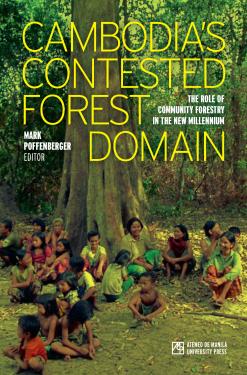
The story of Cambodia's contested forest domain begins at the close of its lengthy civil war in the early 1990s. After numerous attempts to rebuild a devastated economy through the commercial exploitation of the nations rich forest ecosystem, government and civil society sought alternatives to destructive logging by engaging rural communities in forest management and conservation. Cambodia is now at a critical juncture with competing goals of retaining 60 percent of its land area under natural forest versus stimulating economic growth through leasing interactive tracts of forest lands and protected areas to commercial concessions. While the National Community Forestry Program expanded rapidly in recent years, it must compete with economic forces that are transforming the forests of Southeast Asia into agro-industrial plantations and mining concessions. Community forestry represents a viable strategy for alleviating poverty among the rural poor and conserving Cambodias rich forest heritage.
Published in 2013 with the assistance of Community Forestry International (CFI).




